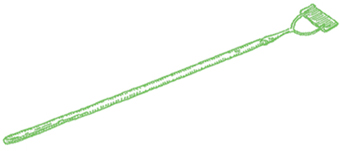

The Caucasus and Its Flowers
Excerpted from a review by
Panayoti Kelaidis, Denver Botanic Gardens, Colorado
. . . The Caucasus and Its Flowers has just been published in the Czech Republic , written by Vojtĕch Holubec and Pavel Křivka, field botanists who have produced what can only be called a masterwork. This weighty tome is unique . . . it is undoubtedly the most lavishly produced, beautifully illustrated rock garden book ever. Of course, it also serves as a general wildflower guide, with much valuable information for those unfortunate souls who have not discovered the joy of growing alpines. But I doubt that there has ever been a book concerning rock garden plants with this much in the way of new information, new plants, and encyclopedic scope when it comes to capturing the many facets of this major and yet little-known floristic region.
First, the essentials. There are 390 pages, all but a few of them illustrated, often with 4 or more photographs to a page (do the math!). The bulk of the book is a detailed breakdown by principal families of the wildflowers of the Caucasus - 509 species, each illustrated with a crisp closeup (usually depicting the whole plant, but often with companion plants, rocks, and even scenery behind). The most spectacular Caucasus endemics, like Daphne glomerata , Draba longisiliqua , D. ossetica, Gentiana oschtenica, Saxifraga columnaris , or S. dinnikii , are often pictured in many different contexts - long shots with scenery, masses of plants, or even plants in seed - to give you a full sense of the plant's habit and habitat. Not only is each photograph clearly numbered so you can quickly relate it to adjacent text, but there is full credit to the photographer and where it was taken (even the altitude), unobtrusively but clearly included at the bottom of each page (a unique and praiseworthy innovation). . . .
The reason why our . . . garden shelves are yearning for this book, however, is twofold. First is the front matter, 73 large pages filled with densely packed historical, geographical, ethnological, ecological, climatological, and other information about the Caucasus . The English may not be colloquial, but you will not find the pithy content of these opening essays in any other book in English, nor on the World Wide Web. Second, and above all, this is an extraordinary work of bibliographic and photographic art. Practically every picture in it is a prize-winner: hundreds and hundreds of beautiful, meticulously reproduced photographs of a myriad of unfamiliar plants (or plants long familiar but here shown in their native haunts), page after page of sumptuous information, lovingly designed and perfectly packaged.
I randomly open the book to Jurinella subacaulis . I have seen references to this in the past, but the lavish portrait (larger than life) is as rich and tantalizing as a French pastry. Turn the pages again: ten photographs of yellow-flowered saxifrages on page 128, one of which ( Saxifraga juniperifolia ) I have grown, but the other nine photos depict five species I have never even heard of before. I am chagrined to find so many plants I did not know, that have now shot to the top of my "must see and grow" list.
I have always suspected that the mountains of the Caucasus were equal to the Alps, Andes, or Rockies in terms of biodiversity and scenic grandeur. This magnificent tome makes it clear to me now that the Caucasus is second only to the Himalaya.